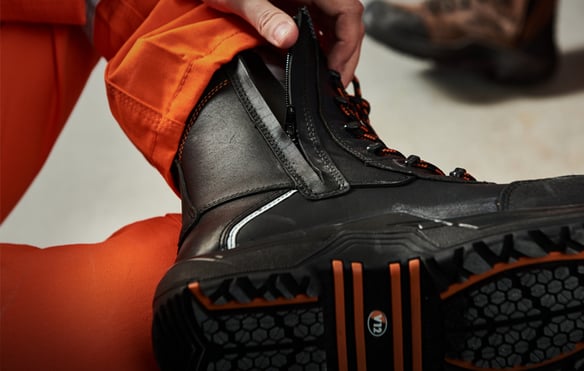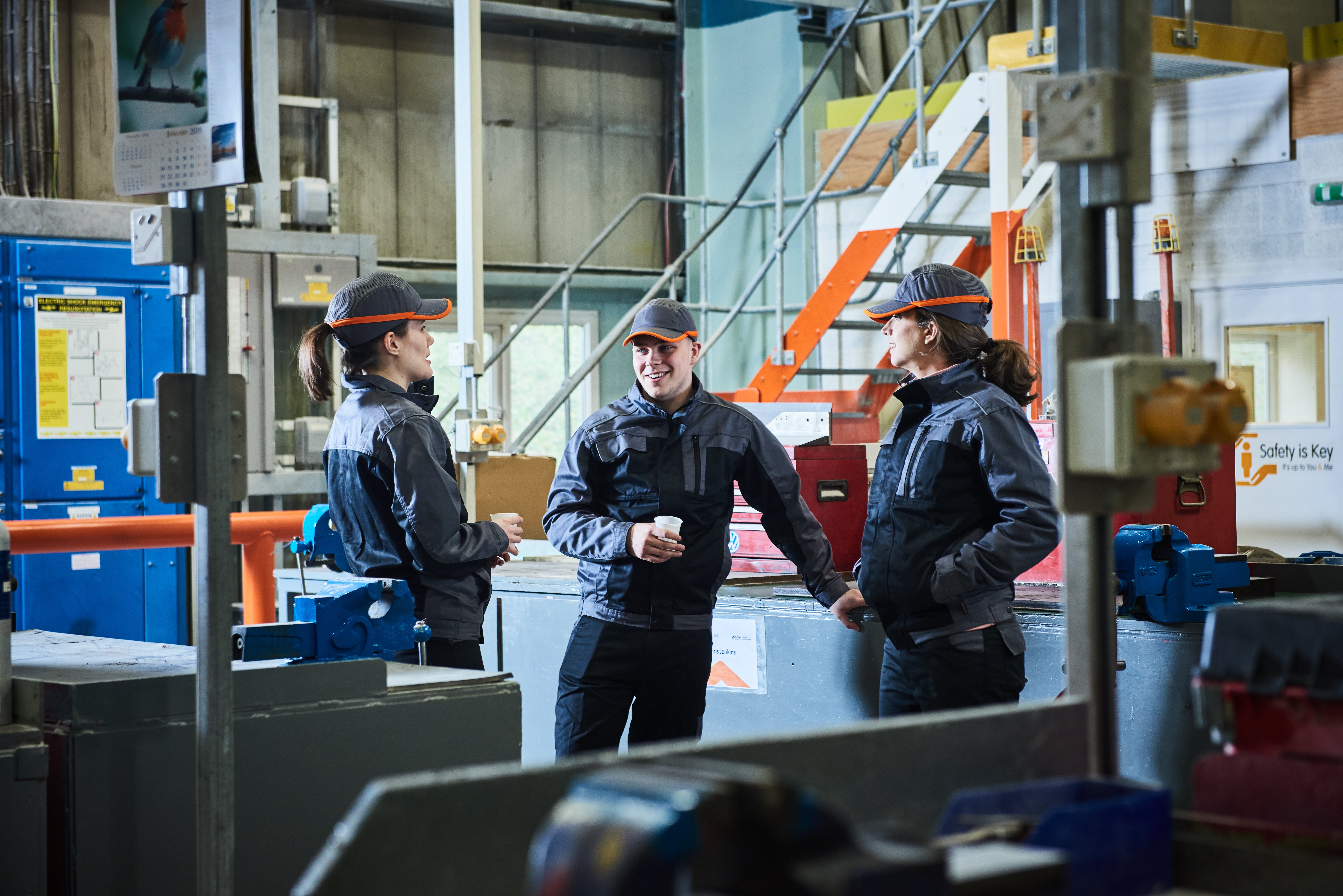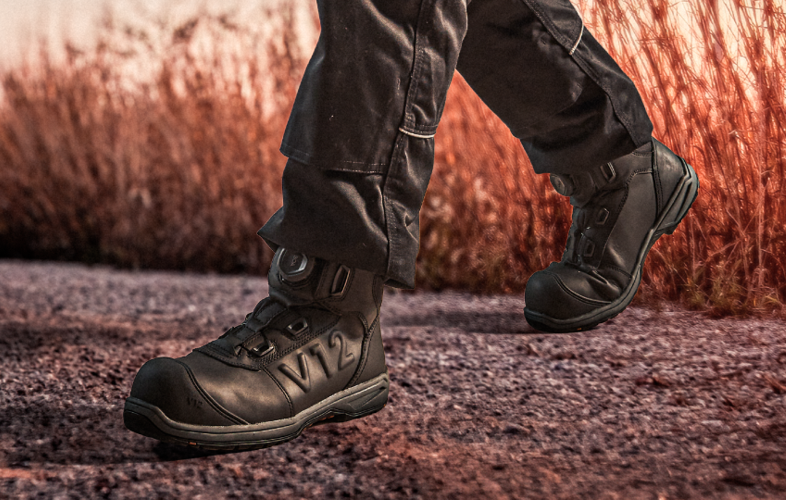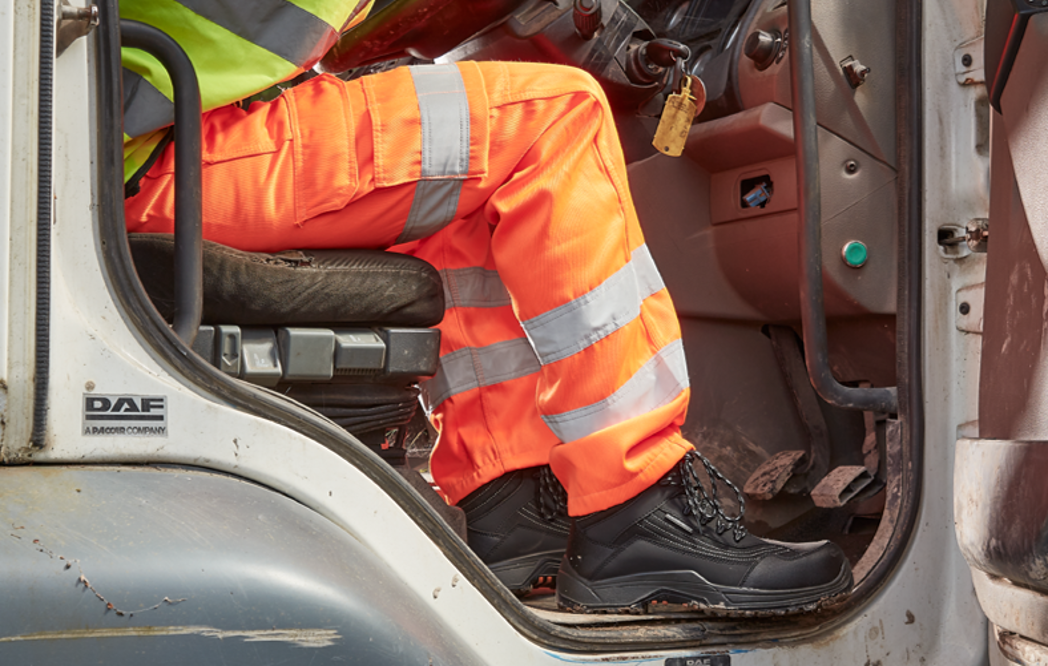We all know that slips, trips and falls in the workplace can have serious, long-term and even fatal consequences.
Yet despite this, they still happen in work environments across the nation with alarming regularity. In this blog, we’re shedding some light on which surfaces and environments these slips most commonly occur. As well as this, we explore how the time of year and its related conditions can affect the number of slip accidents occurring, and most importantly, we’ll talk about what you need to look for in the sole of your safety boot to keep you upright and out of the slip statistics.
.png?width=520&height=488&name=Slip%20statistics%20(HSE).png)
This graph from the HSE shows clearly that slips, trips and falls accounted for nearly a third of all non-fatal accidents in the workplace last year. But while a graph gives you the headline figures, it doesn't always tell the tale of the human cost and consequences of slip accidents...
Slip facts worth thinking about
- The average slip leads to 8.5 lost days of work
- Around 1,000 slip injuries in the construction industry last year led to fractured bones and dislocated joints
- Less than 1% of occupational accidents involve injuries to the toes, whereas 30% of non-fatal occupational accidents are slip-related
- Slip accidents cost employers £512 million per year
- They cost the NHS £133 million per year
So those are some of the consequences - now let’s focus on preventing them in the workplace.
WHERE DO MOST SLIPS OCCUR IN THE WORKPLACE?
According to the British Safety Council, common causes of slipping include:
- Rainwater entering a building
- Fluid leaks from machinery
- Food production getting onto the floor
WHAT DOES THIS MEAN FOR YOU?
If you work in an indoor environment or spend a lot of time walking on slippery man-made surfaces, you need tread that deals with contaminants effectively and quickly. These environments could include:
- Factories (particularly food and beverage plants)
- Warehouses
- Construction sites
- Healthcare establishments
- Steel manufacturing (particularly involving cutting fluids)
This is why V12 spent two years working with industry experts developing the IGSTM (Intelligent Grip System) sole unit: it reduces slips thanks to its water-dispersing hexagonal tread which cuts through liquid and then channels it quickly away.
But this is just one of its many anti-slip features. Watch below to see how else this awesome sole keeps wearers stable on slippery surfaces.
WHAT ABOUT SLIPPING OUTDOORS?
The HSE also tells us that many slips and falls happen due to:
- Uneven/loose surfaces
- Gradients and inclines
- Changes in levels
- Stepping off or transitioning to different surfaces
WHAT DOES THIS MEAN FOR YOU?
If you work mainly outdoors on natural surfaces such as mud, ballast, grass or sand, you’ll require bigger or ‘chunkier’ tread with wider gaps between this tread. These environments could include:
- Construction
- Recycling
- Sewage & refuse disposal
- Mining and quarrying
It was tractor tyre technology that inspired V12 to develop the STSTM (Stability Traction System), a tread designed for uneven and unstable natural surfaces. The large tread engages with the ground which creates grip, while the wide gaps between the lugs create a non-clogging tread, as the mud or debris will work its way out of the sole which maintains the wearer’s balance. Watch below to find out more.
WHEN DO MOST SLIPS OCCUR IN THE WORKPLACE?
"If there is less rain, there are fewer people slipping externally or in building entrances”
Christian Harris, SLIPOLOGIST.
There are many time-related factors that can influence and increase the chances of slipping in the workplace. Let’s take a look at some seasonal aspects to be aware of when trying to increase your slip safety.

Not surprisingly, it's the winter period that we need to look out for. However, it's not always simply the rain that can cause an increase in slips...
According to Slips, trips and falls, the majority of slips occur between the months of October to March, due to the increased rainfall and the resulting slip risks that this volume of water brings.
Furthermore, a blog from the Facilities Management Journal also revealed a staggering 3,000 people approximately are admitted to hospital from winter-related slips and falls each year on average.
More water
The increased rain that the winter period brings is a big contributor to increased slips and falls. Slipologist Christian Harris told us:
"There is a spike during the winter due to the weather, and conversely there are fewer slip-accidents in the summer. Accidents continue in places like kitchens, swimming pools of course, but if there is less rain, there are fewer people slipping externally or in building entrances.”
Find Christian on LinkedIn, where you can see his science-based slip solutions.
Leading on from water, the added risk that ice brings is also worth considering. Ice outside has obvious slip risks, but like the rain, ice is brought into buildings which quickly turns to water, adding more risk by creating more water on which to slip.
COLD
What’s the cold got to do with slips? It’s not just about ice – read this blog to find the answers.
POOR LIGHT
It’s often hard to notice when the light has lessened, particularly if you’re busy and tired. But a lot of slips and falls can occur simply due to reduced visibility. So, in the darker winter months, remember the relationship between adequate light and safety.
WHEN SLIPS BECOME FALLS - LADDER SAFETY
It’s easy to see slips and falls as separate issues, but very often, one leads to the other. And this is never more relevant than in ladder work. Slipping on flooring or on the ground might lead to a fall, but a slip on a ladder will almost certainly lead to a fall – and a fall from height.
 Given this, if you’re involved in any ladder work, don’t see being on a ladder rung as a reason to think you’re immune from slipping. In fact, you probably have even more reason than most to have specialised soles, given the serious and even fatal consequences of ladder falls which occur every year in the UK.
Given this, if you’re involved in any ladder work, don’t see being on a ladder rung as a reason to think you’re immune from slipping. In fact, you probably have even more reason than most to have specialised soles, given the serious and even fatal consequences of ladder falls which occur every year in the UK.
Both IGSTM and STSTM sole units have been designed with 4 deep ladder grips, so if you're working from height, you stay safe.
Pictured: The VR620.01 Avenger IGS - V12's hi-leg shows off the ladder grips on its IGSTM sole.
Do you regularly work from height? Find out more about staying safe on ladders in this blog.
FINAL SLIP TIPS
Here are some final pieces of advice from the HSE to help you stay upright on potentially slippery surfaces.
- Some soles can deteriorate with wear such as the cleats wearing down over time, so keep monitoring whether a replacement is needed so your grip stays reliable.
- Don’t just clean the upper of a boot - soles should be cleaned regularly too. If soles clog up, they won’t grip and can also lead to a lack of balance.
- If you can’t avoid changes in level such as doorways and it’s not possible to instal ramps, use signs to warn workers to look out for the change in level.
FINDING THE RIGHT GRIP FOR YOU
As we often say at V12 Footwear, you can’t always control the surface, but you can control your footwear. And as we’ve learnt from the IGSTM and STSTM sole units, when it comes to grip and staying slip-free, there is no one solution – it's all about having the right type of grip to meet the demands of your particular environment and application.

TRIALLING YOUR SLIP-RESISTANT FOOTWEAR
We don’t believe companies in safety-critical industries should get their boots ‘off the shelf’ or choose safety footwear for employees if they don’t know exactly what type of protection is needed for the workplace’s demands. This is why V12 offer a no-obligation three-part footwear suitability assessment where we can work with you to establish the best safety footwear for your employees including the right slip-resistance to ensure maximum safety and compliance. It includes:
- an industry-leading audit
- a multi-step safety footwear trial process
- our expert safety footwear recommendation
If you’re responsible for procuring PPE for your team and want to ensure maximum safety and compliance for employees, click below to find out more.

.png)



